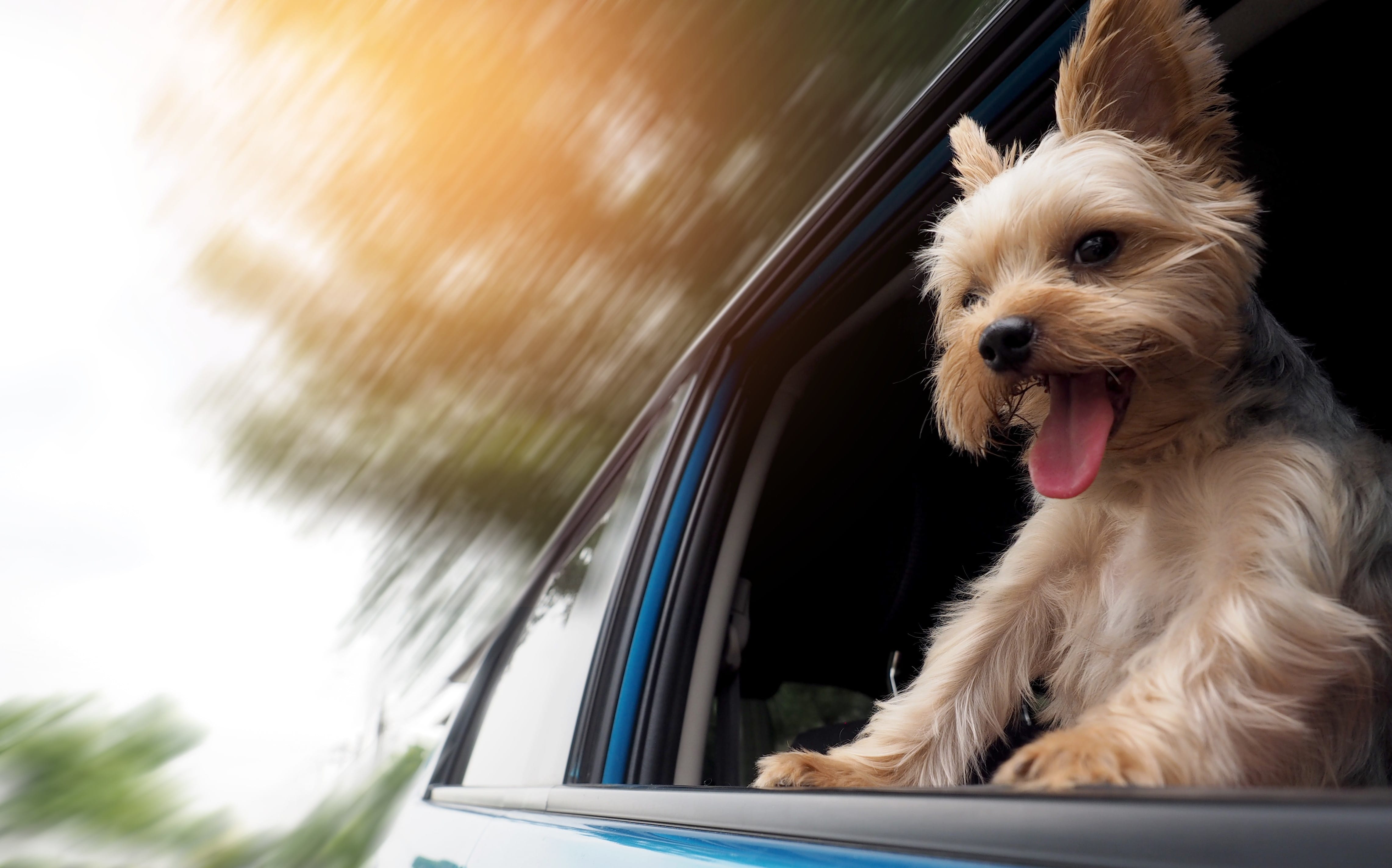Safe Ways to Travel with Pets in the Car

Off somewhere in the car with your pet? Planning to travel with pets may seem like no big deal, but there are several safety factors to take into account before you get on the road.
It’s often discussed how important passenger safety is in the car, so why shouldn’t we treat our loveable pets with the same care and attention? It is pretty common to see pets walking around on back seats and dogs with their heads out the window. Even though they look super cute doing this, it is far from safe.
Here at RAC Shop, we’re pushing for a more careful approach, that will maximise safety for all pets in vehicles. Whether you have a dog, cat, rabbit or lizard, they will all no doubt need to take a car journey at some point. When they do, they must be kept safe and secure.
So, if you want some pet travel care advice and tips for travelling with pets in the car, we’ve got a little guide that will help you on your way to purrrrfect pet travel!
Why is Safe Pet Travel So Important?
Beyond our introduction into why safe pet travel is important, there are several things that may not have crossed your mind. So, if you’re not convinced yet, maybe a couple of the following points will help change that.
Pet Safety
The most obvious reason for following pet travel safety guidelines is to prevent them from harm.
Even with the most careful driver behind the wheel, pets can still be thrown about in the car if they’re not taken care of properly. You don’t want them getting injured or harmed because of poor safety measures.
Passenger Safety
You must also think about the safety of the driver and the other passengers when carrying pets in the car. If pets are left to roam free they can be a huge hindrance and can cause injuries to people due to the small, restricted environment.
Preventing Accidents
Not following safety techniques with pets in the car can be the cause of an accident. Pets that aren’t restrained properly can be a distraction for the driver and can even get in the way of driving controls such as the pedals or gearbox.
The Highway Code
The Highway Code must always be followed by drivers, and the section on pet travel is no exception. The Highway Code states: “When in a vehicle make sure dogs or other animals are suitably restrained so they cannot distract you while you are driving or cause you or themselves injury if you stop quickly. A seat belt harness, pet carrier, dog cage or dog guard are ways of restraining animals in cars.” Not complying with the code can result in penalties or even the loss of your licence.
Insurance
With physical safety issues aside, travelling with pets in the car without proper precautions can interfere with your car insurance, should you have an accident. Also, if your pet was to sustain an injury whilst in the car, failing to have followed safety methods can invalidate your pet insurance in some cases.
Now that we’ve gone over why it is so important to keep your pets safe in the car, here are a few other ways to keep them travel safe.
Prepare Beforehand
Keeping your pets safe for vehicle travel begins way before you even get in the car. Preparing for car journeys in advance will help you to maximise safety for you and your pet.
One tip for maximising safety for your pet is to start them off as early as you can. Getting pets used to travelling in the car at a young age will pay off in the long run. It will make it easier for them to feel relaxed when buckling up in the car since the situation will be familiar to them. Start them off slowly with short trips and build up to longer journeys so that your pet feels ready.
Also, pets can get car sick just as easily as people sometimes, so you should take every precaution to stop them feeling sick. Allow them time to digest any food before putting them in the car. You should also bring water for them.
Some people take it that step further and pack a pet car travel kit which includes water, treats, toys and so forth. This is so that their pet can feel comfortable and right at home. You can even include medical supplies and litter scoops, should you need it.
Suitable Restraints
One of the most important parts of keeping your pets safe in the car is keeping them in suitable restraints. You may need different types of restraint depending on your pet. Examples include; collars, leads and harnesses; carriers, cages and crates and you can also get yourself travel covers and guards to protect your car’s interior.
Whichever type of restraint or carrier you need, you must make sure it is secure enough and that your pet is comfortable. If you opt for some kind of cage or box, make sure it is well ventilated. Throw in some home comforts to keep your pet happy.
Investing in the most appropriate equipment is essential as it can be the difference between a safe and happy journey and a devastating accident.
Take it Easy
Another important piece of advice is that you must remind yourself to take it easy. Pets aren’t best suited to long journeys in the car. So, before you schedule a trip, make sure that you plan long journeys with plenty of stops so your pet can take a break.
This is especially important with dogs. You should let them stretch their legs for a while and have a drink during long journeys. This will help them feel more comfortable in the car and they’ll be less restless.
You should never under any circumstances leave a pet alone in a car. It is widely recognised that doing so can be fatal for an animal, so this guideline should be taken very seriously.
It is exciting to take your pets somewhere new on an adventure and it is often unavoidable that you’ll have to drive them somewhere whether it’s too the vets or to an animal care facility. So before you just put your pet in the car beside you, be sure to think about all these things first, so that you and your pet can have a safe and enjoyable journey.
To get ready for a trip with your pet, see our range of pet travel care products.




